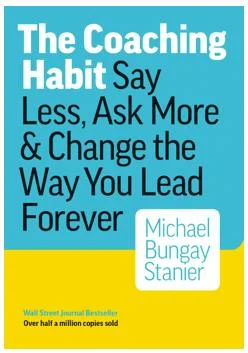Hello friends,
The other day I was talking with a client preparing an online facilitation training.
They had a group of senior leaders delivering in-house corporate training.
✔️The leaders have a wealth of experience and knowledge.
✔️The training content is solid.
But when the feedback forms came in, there was a common complaint:
The leaders weren’t allowing the audience to engage.
They were doing all the talking. The participants were expected to pay attention and take in the information. Not surprisingly, the sessions fell a little flat.
Less talking = more engagement.
It may seem obvious. If you want people to engage you need to open opportunities for them to interact and contribute.
And it’s backed up by research (h/t Romy Alexandra!).
Engagement levels are highest if participants do most of the talking, and lowest when the presenter does most of the talking.
Sounds obvious right?
But let’s face it. it’s easier said than done. In my experience, it’s one of the things that people who lead online sessions struggle with most. Myself included!
It’s also one of the biggest breakthroughs I see people have in my course Breakthrough Facilitation.
From “Sage on the Stage” to “Guide on the Side”.
Learning to lead engaging live sessions requires you to make the shift from being the expert in the room to being a knowledgeable guide on the side.
From talking to listening and asking questions.
From having all the answers to drawing out the answers from group members.
When you make the shift, your group members will engage more. They’ll have more insights and even breakthroughs.
So how do you make the shift from sage to guide? That’s our Quest for this week. 🔎
👉 Sage vs Guide: How to spot the key differences
👉 The Coaching Habit, Say Less, Ask More
👉 A Zoom Tool That Can Help You Track Your Talking
Plus this week’s curated list of events and resources.
Let’s jump right in!
🔎 Sage vs Guide: How to Spot the Key Differences
I was leading groups for a long time before fully understanding the differences between the sage on the stage and the guide on the side.
The more clear I got, the easier it was to shift to being an effective guide.
Here’s how you can spot the key differences👇

Sometimes this distinction is crystal clear. And your primary role is to be the guide.
Question: Can you be a guide when your job is to deliver content? After all, your group is looking to you for expertise. This is especially the case when you are a teacher, trainer, and subject area expert.
Answer: Even when your job is to deliver content, you can guide your group’s interaction with the content.
📘The Coaching Habit: Say Less, Ask More & Change the Way You Lead Forever
Shifting from the Sage to the Guide is a surefire way to increase engagement in your live sessions.
But it’s very easy to default into talking mode. Especially if you are used to presenting. And if you are feeling nervous.
The problem is that when you overtalk, you risk short-changing your audience from discovering valuable insights. And it kills engagement.
So how can you make the shift?
Enter the Coaching Habit by Michael Bungay Stanier. This is one of my all-time favorite books. It will help you hone two skills that are at the heart of being an effective guide on the side: active listening and asking powerful questions.
Here are my 3 top insights:
👉Stop giving advice and start asking questions. Asking the right question will lead others to find the right solution to the right problem.
👉Ask what not why. “Why” puts people on the defensive. “What” opens up a conversation.
👉Get comfortable with silence. Silence lets people think and creates space for learning and insight.

⚒️ A Zoom Tool That Helps You Monitor Your Talking
1/ BlueSky App – Participation & Speaking Time Tracker
A Zoom Marketplace App that tracks speaking time in your virtual meetings It counts the time a meeting participant is unmuted and speaking into the mic.

✅Pros – visual graphs that allow you to monitor your own and other’s speaking time.
🚫Cons – it doesn’t track participant contributions in the chat or in other ways.
How do you track your speaking time?
💪Facilitator Finds
1/ ⚒️Mischief Makers Prompt Generator (h/t Romy Alexandra again:)
An easy-to-use tool that generates check-in prompts and connection exercises. I like this super simple prompt “Name one thing you want to contribute today.”
2/ 📅Create Highly Engaging Virtual Presentations with John Chen
A free Event on February 14 organized by the brilliant StreamAlive team with a seasoned virtual engagement pro and author John Chen. Register for free here.
3/ 📅 12-Hour Online Festival of Facilitation.
10 interactive sessions organised by the fabulous New Zealand Facilitator’s Network, on Thursday, February 8th. I’m honored and excited to be leading the Festival’s kick-off session on icebreakers. Spaces are filling fast. Register here.
Got your own facilitation finds? Hit reply to this email. I’d love to feature them (and YOU) in this section.
✍️Quote of the week
“The quieter you become the more you are able to hear”
Rumi, 13th Century Sufi Mystic and Persian Poet
💌 Thanks for reading The Quest
I always love hearing your feedback and suggestions. Just hit reply to share your thoughts and ideas.
If you were forwarded this email, you can subscribe to The Quest 👉here.
If you enjoy The Quest, I’d appreciate it if you shared it with anyone you think might like it.
Creatively yours,

Whenever you are ready there are 2 more ways I can help you:
👉Custom coaching & team training. Book a free 15-minute zero-commitment call with me to see how I can support you and your team.
👉5-week Live Online Course. The Breakthrough Facilitation course gives you tools, personalized feedback, and a proven framework for designing and leading high-engagement live sessions. Join the interest list and be the first to get the next cohort dates and discounts.